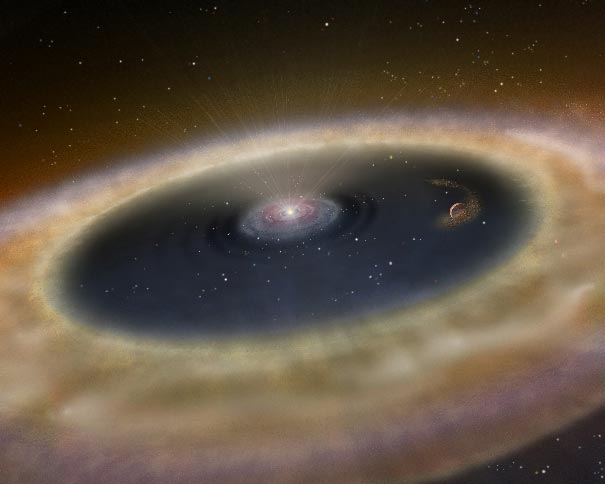In order to understand how the solar system began, we need to further investigate the ways in which planets are formed. LkCa 15 may hold one of the answers.
Dr Michael Ireland of Macquarie University and Dr Adam Kraus of the University of Hawaii’s Institute for Astronomy published in The Astrophysical Journal their discovery of LKCa 15 b, a protoplanet. The researchers used the 10-metre Keck telescopes in Mauna Kea, Hawaii, and aperture mask interferometry, a form of speckle interferometry, to capture the image of the newly formed celestial body.
LkCa 15, its host star, is around two million years old; this means that the new planet is at least five times younger than any other exoplanet discovered. Ireland described it as a gas giant, similar to Jupiter. “We’ve caught this at the beginning of its life-cycle and orbiting a young, relatively nearby star,” said Ireland.
As it orbits its host star, the protoplanet is building itself from surrounding dust and gas. The researchers presented their findings today at NASA’s Goddard Space Flight Centre, and they plan to continue their observations. “Studying systems like these can help us to understand more about our own solar system in relation to others out there,” said Ireland.
Source: Macquarie University

LkCa 15 resides in the Taurus constellations, in between Aldeberan and the Pleiades. Image: M. Ireland/IAU/Sky & Telescope

The planet is 500 times fainter than the star. In this image, gas and dust from around the planet (red) and the blue features emanate from the planet itself. Image: M. Ireland and A. Kraus.







